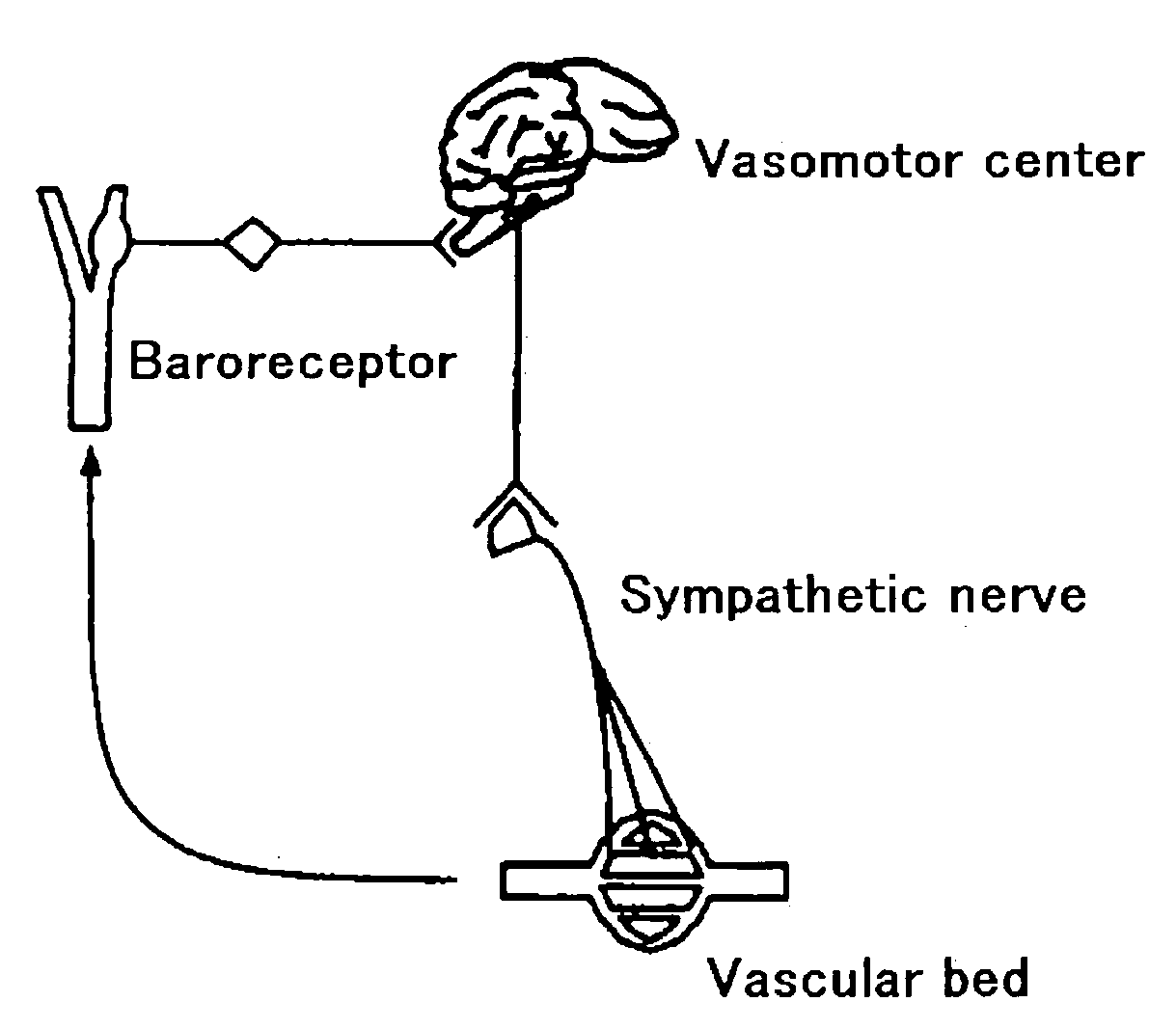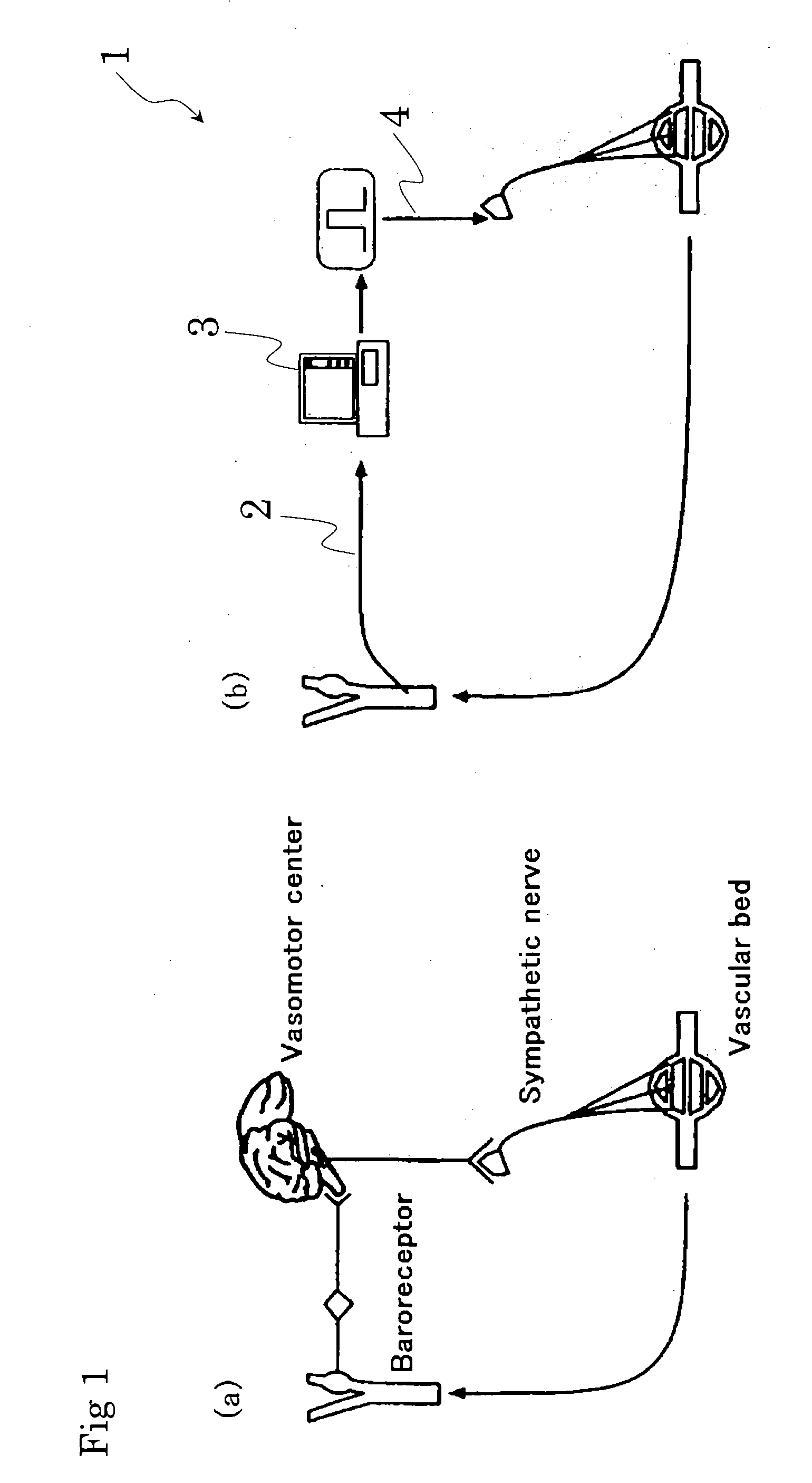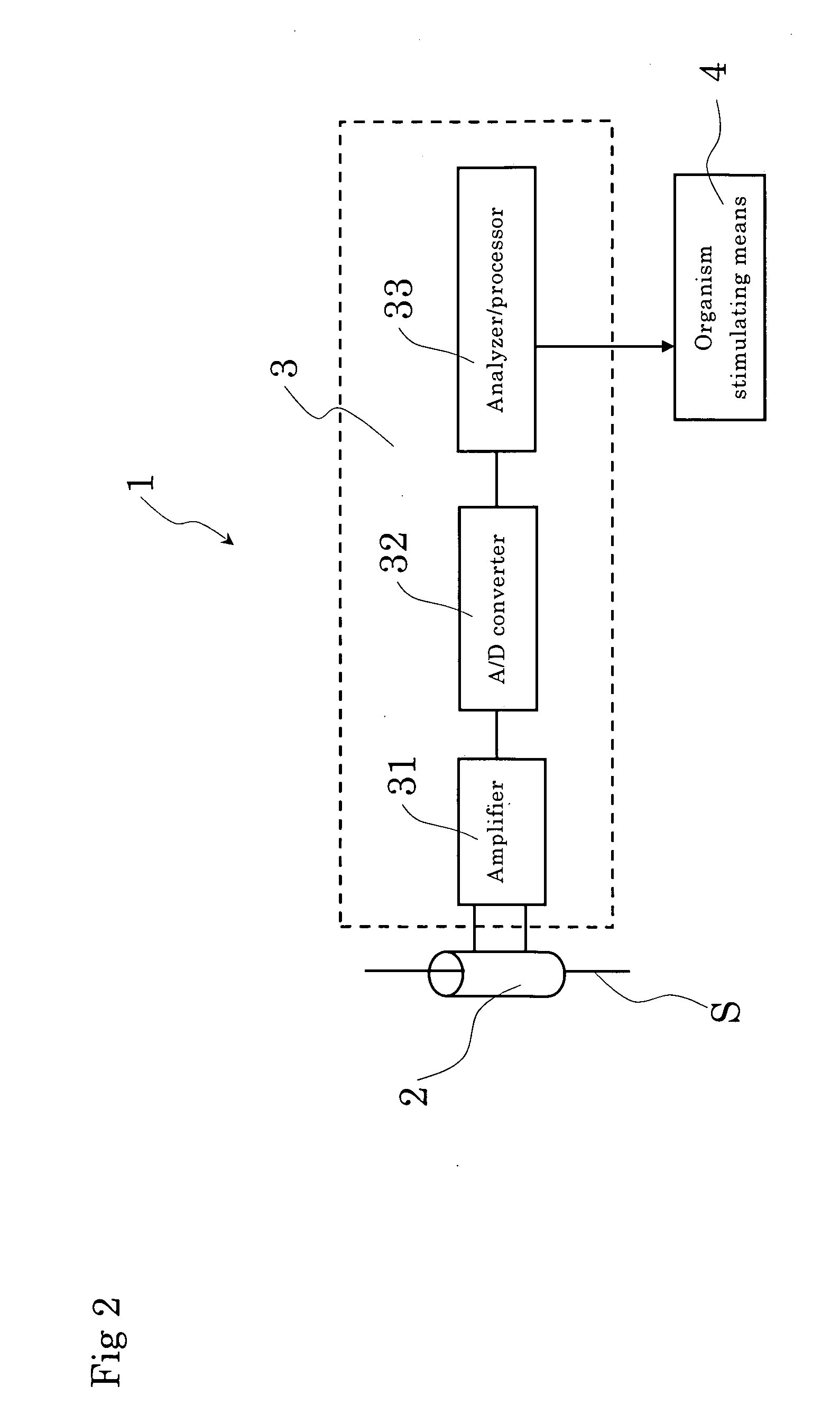Medical treatment system using biological regulation function alternate, cardiac pacing system based on the medical treatment system, blood pressure regulating system, and cardiac disease treating system
a biological regulation and function technology, applied in the field of medical treatment system using biological regulation function alternate, cardiac pacing system based on medical treatment system, blood pressure regulating system, cardiac disease treating system, can solve the problems of not always working in concert with native organs, specificity, sensitivity and transient response of heart rate regulation compared to native heart rate regulation by such pacemakers, and achieve the effect of regulating heart ra
- Summary
- Abstract
- Description
- Claims
- Application Information
AI Technical Summary
Benefits of technology
Problems solved by technology
Method used
Image
Examples
example 1
[0082] The anterior descending branch of the left coronary artery in 20 anesthetized rats was ligated to create rats with myocardial infarction. Mortality was periodically tabulated in this group.
[0083] In 16 other rats with myocardial infarction, heart rate was decreased by stimulating the vagal nerve (pulse width: 2 msec, pulse voltage: 2 V, pulse frequency: 2 Hz) from 2 minutes after the onset of myocardial infarction. Mortality was also periodically tabulated in this group.
[0084] In 15 additional rats with myocardial infarction, heart rate was decreased by stimulating the vagal nerve (pulse width: 2 msec, pulse voltage: 2 V, pulse frequency: 5 Hz) from 2 minutes after the onset of myocardial infarction. Mortality was periodically tabulated in this group.
[0085] The mortality results are shown in FIG. 4.
[0086] The results in this example show that all rats with myocardial infarction but with no treatment by vagal stimulation died within 30 minutes (FIG. 4(a)). On the other han...
example 2
[0088] Since Example 1 was performed under anesthesia, the following test was performed to exclude the effects of anesthesia.
[0089] Blood pressure telemeter, vagal nerve tele-stimulating device and coronary artery cuff occluders to create myocardial infarction were implanted in 32 rats.
[0090] When the rats had fully recovered from surgery for one week, the descending anterior branch of the left coronary artery was occluded with the use of cuff occluders in 12 out of 32 rats. Mortality was tabulated periodically with no vagal nerve stimulation.
[0091] In another 10 out of the 32 rats, the vagal nerve was stimulated (pulse width: 0.2 msec, pulse current: 0.1 mA, pulse frequency: 20 Hz) immediately after the occlusion of the coronary artery with cuff occluders for 60 minutes. Mortality was tabulated periodically with vagal nerve stimulation.
[0092] In another 10 out of the 32 rats, the vagal nerve was stimulated (pulse width: 0.2 msec, pulse current: 0.2 mA, pulse frequency: 20 Hz) i...
example 3
[0097] The following tests were performed to investigate the long-term effects.
[0098] Myocardial infarction was created under anesthesia in the same manner as in Example 1. Surviving rats after every attempt of resuscitation (survival rate after 1 week being ˜40%) underwent another surgery 1 week after the first surgery. Blood pressure telemeter, vagal nerve tele-stimulating device and coronary artery cuff occluders to create myocardial infarction were implanted in these rats in the same manner as in Example 2.
[0099] After an additional 1 week, in half of the rats (13 rats), vagal stimulation was started with the stimulation condition to decrease the heart rate by 20 beats (pulse width: 0.2 msec, pulse current: 0.1 to 0.13 mA, pulse frequency: 20 Hz), and the vagal nerve was stimulated for 10 seconds every 1 minute. The test was continued for 5 weeks. No vagal stimulation was applied to the remaining half of the rats (13 rats). No rat deaths were observed in 5 weeks.
[0100] Change...
PUM
 Login to View More
Login to View More Abstract
Description
Claims
Application Information
 Login to View More
Login to View More - R&D
- Intellectual Property
- Life Sciences
- Materials
- Tech Scout
- Unparalleled Data Quality
- Higher Quality Content
- 60% Fewer Hallucinations
Browse by: Latest US Patents, China's latest patents, Technical Efficacy Thesaurus, Application Domain, Technology Topic, Popular Technical Reports.
© 2025 PatSnap. All rights reserved.Legal|Privacy policy|Modern Slavery Act Transparency Statement|Sitemap|About US| Contact US: help@patsnap.com



